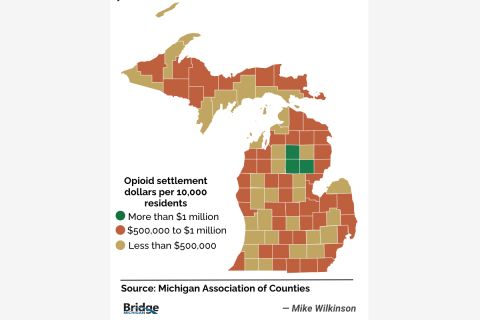“When I saw the amount, I figured it wasn’t worth the taxpayers’ time to fill in the paperwork” to get the funds, said Kelly VanMarter, manager in Genoa Township in Livingston County, which was set to receive $240 over 18 years.
Money that isn’t claimed by townships or cities are sent to the counties in which they are located.
Other large cities and counties in line for the settlement include Macomb County ($53 million) Oakland County ($35 million), Detroit ($43 million), Flint ($17 million) and Kent County ($18 million).
Communities are receiving different amounts per capita, depending on a formula the state developed to measure vulnerability to the crisis.
For example. Ogemaw County, in rural northeastern Michigan, will receive almost nine times more per capita ($1.8 million per 10,000 residents) than Ottawa County, near Grand Rapids ($208,000 per 10,000 residents.)
Michigan’s Substance Use Vulnerability Index takes into account factors such as fatal and nonfatal overdose rates, opioid prescription rates, drug arrests and distance to treatment centers.














